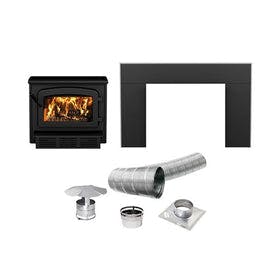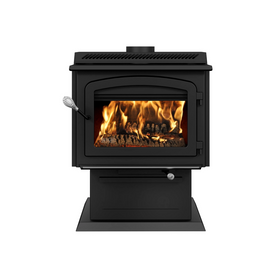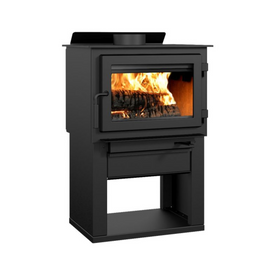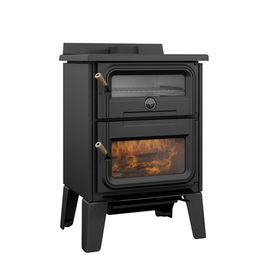
Is A Bioethanol Fireplace Part of Your Dream Home?
Last Updated: Feb 11, 2025Daydreaming about curling up next to a crackling fire with your favorite movie and a cozy pet or two? Then you've also likely had to mentally grapple with the painful reality of adding said fireplace to your home. There are cost considerations for installing a typical wood-burning or gas fireplace. And sustainably-minded folks may also get held up because traditional fireplaces are not exactly, well, sustainable.
But don't lose hope, fire seekers; there are now more choices. In fact, beyond gas, electric, and wood burning, bioethanol fireplaces are a thing.
Table of Contents
- What is a Bioethanol Fireplace?
- What Is Bioethanol?
- Find Your Perfect Bioethanol Fireplace
- What Is a Bioethanol Fireplace Insert?
- What Is a Wall-Mounted Bioethanol Fireplace?
- What Is a Freestanding Bioethanol Fireplace?
- Are Bioethanol Fireplaces Safe?
- How Much Do Bioethanol Fireplaces Cost?
- Are Bioethanol Fireplaces Sustainable?
- Where Can I Buy a Bioethanol Fireplace?
- The Takeaway

What is a Bioethanol Fireplace?
A bioethanol fireplace is a self-contained fireplace. It's unvented and unconnected to a fuel line or chimney and has the market cornered on pure flexibility. Because these types of fireplaces don't emit any smoke or need to be 'hooked in,' installation is much less costly (or downright nonexistent). The best part? Placement is no longer a concern, and some models can go almost anywhere. So, besides skipping out on a cumbersome and costly installation process, you're also freed up in your design decisions.
While there are many differences between bioethanol fireplaces and traditional fireplaces, the main difference lies in the fuel: bioethanol.

What Is Bioethanol?
Bioethanol is a clear, colorless, flammable liquid. It's an alcohol produced from a fermentation process involving sugar and starches. Sound clean and green? That's because it is. Unlike fossil fuels, bioethanol is derived from highly renewable crops. The most common crop sources are corn, sorghum, potatoes, wheat, and sugar cane. However, even vegetable waste like corn stalks can be used, which is another way it scores high marks on the sustainability spectrum. This fuel may sound futuristic and innovative, but using bioethanol as fuel is not a new concept. Back in 1925, Henry Ford famously designed the Model T to run on both gasoline and biofuel.
If this is sounding too good to be true, keep in mind that bioethanol has some drawbacks. Like any flammable fuel, safe storage and use are essential. Biofuels need to be stored in a cool, dry place, safely out of reach of children and pets, and extra care should be taken when filling the fireplace. Spills need to be cleaned quickly and effectively.
Another drawback can be finding the fuel in the first place. Thanks to the rising popularity of these fireplaces, though, sourcing bioethanol fuel is getting easier. You can find it at most stores that sell fireplaces or your local big box home supply stores.
Find Your Perfect Bioethanol Fireplace
If you're in the market for one of these contemporary fireplaces, you have several choices, which break down roughly into three categories: inserts, wall-mounted, and freestanding.

What Is a Bioethanol Fireplace Insert?
Bioethanol fireplace inserts are one of the most popular bioethanol fireplace options. This is a basic burner, usually sold with glass shields to protect you from the open flame. One of the most common uses for the insert is to use it in place of an old wood-burning fireplace. Because these burners come in all shapes and sizes, you're limited only by your imagination.

What Is a Wall-Mounted Bioethanol Fireplace?
If you're not in the market for an insert, you can opt for either a wall-mounted or freestanding fireplace. Both options have their pros and cons. Wall-mounted fireplaces have the benefit of adding a more "complete" design look to a room. They have an airy, modern flair and can be mounted almost anywhere in the house. One widespread use is a recessed look that is double-sided, meaning one fireplace can exist in two rooms of the house.

What Is a Freestanding Bioethanol Fireplace?
For those who want even more flexibility, like renters, you can use a freestanding fireplace that is moveable from room to room, changing location as often as your mood. Another massive benefit to these freestanding models is that you can choose a size that works for the room without losing precious floor space. Do you live in a bachelor's suite? Opt for a super small freestanding tabletop design. Are you working with an awkward layout? Check out the ultra-flexible standing designs. These also come in a wide range of shapes and sizes that you can play with until you find the perfect location.
Are Bioethanol Fireplaces Safe?
More importantly, though, there is also indoor air quality to consider. Because bioethanol fireplaces are unvented, any fumes are dispersed directly into the air around the fireplace. Most manufacturers say that the fireplaces produce no dangerous fumes. However, a 2013 German study found that the levels of carbon dioxide and nitrogen dioxide emitted were above the safety guidelines. This fact alone has some people saying that the only safe place for an ethanol fireplace is outdoors. If you want to keep it indoors, make sure your ventilation system is working correctly to bring in and filter fresh.
How Much Do Bioethanol Fireplaces Cost?
The cost of a bioethanol fireplaces varies drastically based on several factors. From a few hundred to a few thousand and beyond, there is no average or typical price. Although some brands claim that a cheaper version isn't as safe as a more expensive version, there isn't any hard data to back it up. If you're in the market for one, expect to pay in the low hundreds, at a minimum, and extend your budget to a few thousand for a fancier, installed version.
Are Bioethanol Fireplaces Sustainable?
Using bioethanol as a fuel over wood or natural gas carries several benefits in the sustainability realm. Compared to wood, bioethanol is considered a fuel that combusts more completely than wood, meaning it doesn't emit the same harmful smoke. Compared to natural gas or petroleum-based products, bioethanol is a renewable resource—and not a fossil fuel. Perhaps the most significant benefit from a sustainable home's perspective is that venting does not need to be installed. This lack of venting is an asset for making sure your home stays warm in the winter and cool in the summer - especially if you adhere to passive house principles.
But, the production of bioethanol is also a factor. Some studies, like this one from Cornell University, conclude that producing bioethanol requires more energy than it generates. So, as with many products, there is no one truly "sustainable" solution; there are almost always tradeoffs. You have to consider all of the costs and benefits and decide what is right for you.
Where Can I Buy a Bioethanol Fireplace?
If you've decided to hit the GO button and try one, you can find bioethanol fireplaces at most fireplace specialty stores. The benefits of buying from a specialty store lie in the fact that you might have access to more information and education about the ins and outs of using your new fireplace. However, bioethanol fireplaces can also be found in almost every big box home supply store and online.
Joy Wood
Joy grew up in the natural beauty of the North Okanagan, nestled near the foot of the Monashee Mountains. Hailing from a family of home builders, both the environment and home construction became closely intertwined in her youth. Today, she and her builder hubby are raising their family in Vancouver, where she avidly follows the current sustainable construction trends as the city aims for the title of ‘Greenest City’ by 2020.











